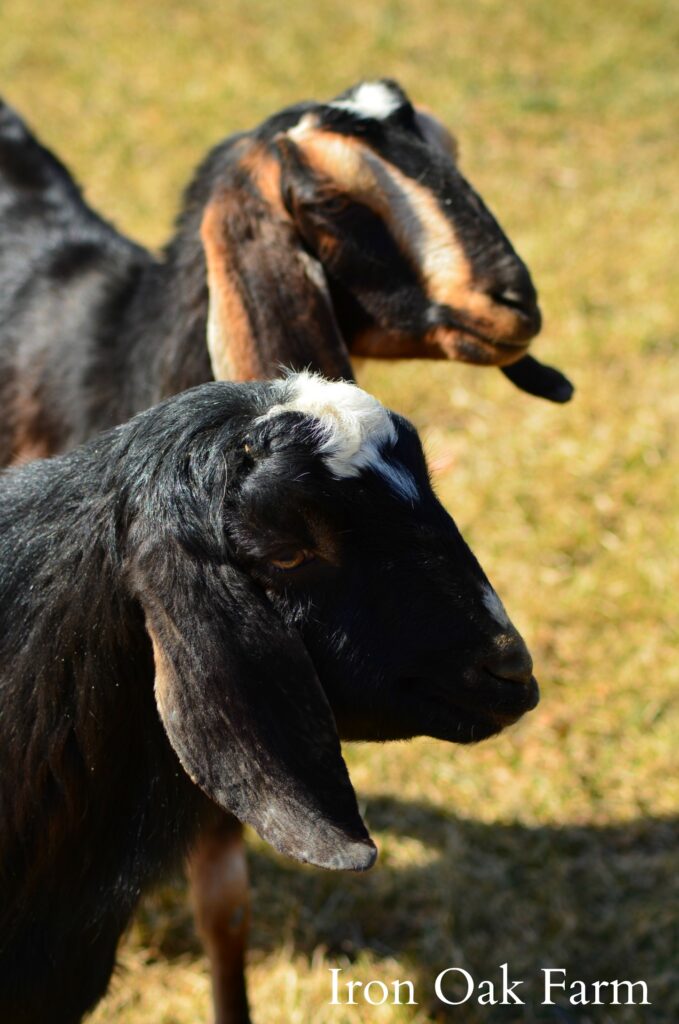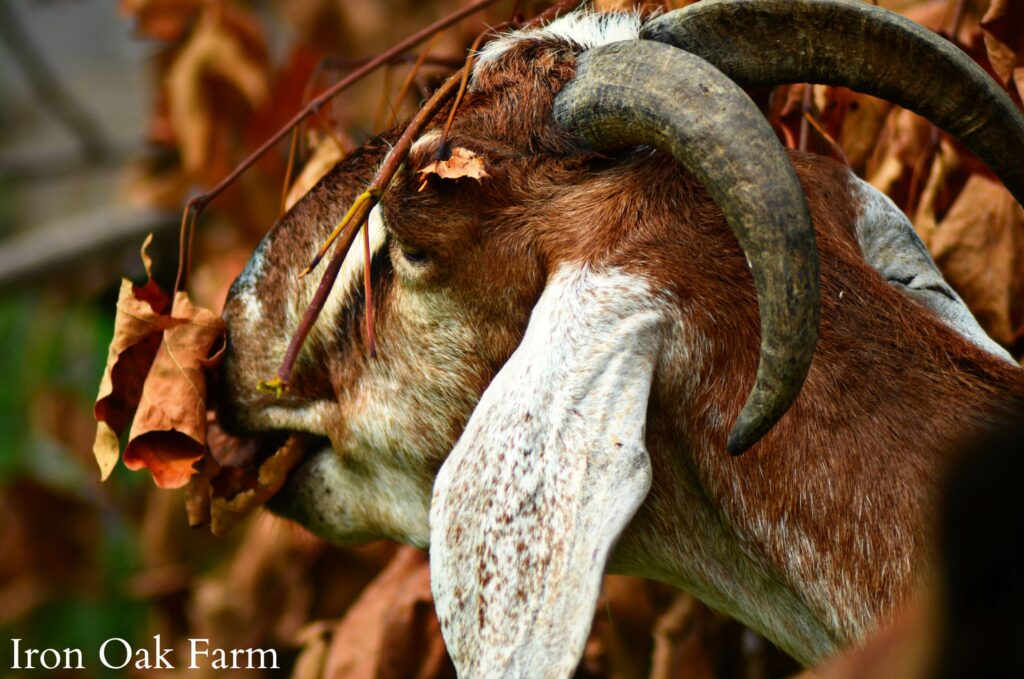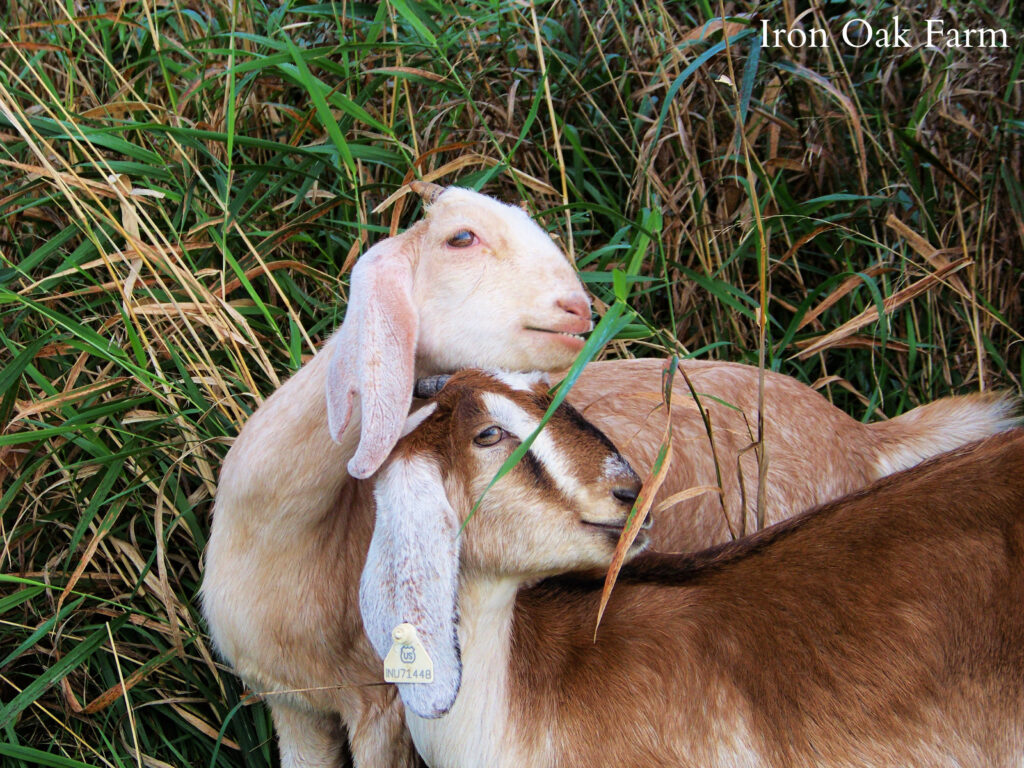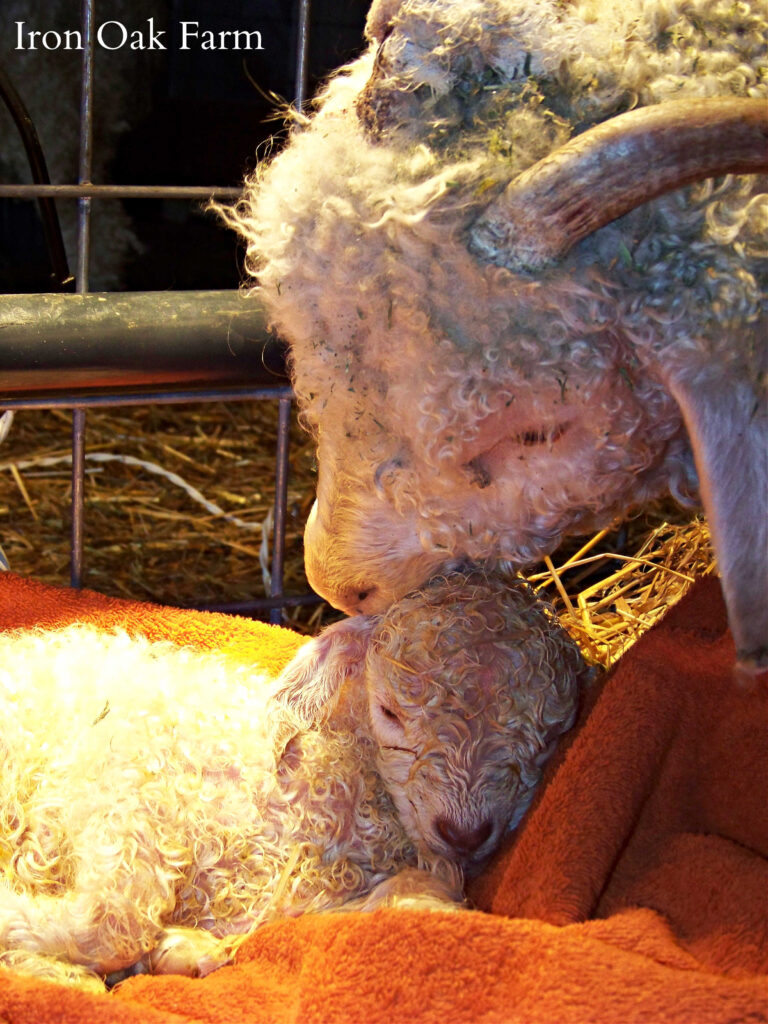Heat, Estrus, and Gestation in Goats
Having a good understanding of the timelines of Heat, Estrus, and Gestation in goats can help you to identify when your doe is fertile, when you should introduce a buck, and when you should expect babies. If you are new to goat breeding, it can be especially helpful to be more proactive in the planning aspect of getting your doe pregnant. If you know where she is in her breeding plan, you can better understand the signs, symptoms, and behaviors your goat is displaying. This will provide you with a wealth of experience and knowledge for future breeding seasons.



We introduce our bucks on Halloween, October 31st. That way we know to start looking for kids in early March of the following year. Gestation is 150 days on average. Late October is toward the later stages of the breeding season, but we live in Michigan and have very cold winters. If we breed earlier than this we have kids being born in cold weather and risk hypothermia. If you are hiring or renting a buck, it's essential to know how to tell if your girls are in heat and how often estrus occurs to ensure that the mating is successful.
What time of year do goats go into heat?
Goat breeding season is the time of year when goats begin their heat cycles. The breeding season depends on the breed of goat you keep. Some breeds are only fertile in the fall while others are fertile year-round.



Cold climate breeds
For most dairy breeds or the Swiss/Alpine breeds like Alpine goats, Toggenburg goats, Oberhasli goats, Saanen goats, and LaMancha goats, their breeding season ranges from late summer to late fall. Angora goats are also seasonal breeders.
These goat breeds were developed in cold climates where it makes sense for babies to be born as the weather is warming up. Then they have all summer to grow and develop to prepare for winter. If these breeds were fertile all year, babies could be born in the dead of winter and would most likely perish.



Warm climate breeds
Dessert breeds or equatorial breeds like Nigerian Dwarf goats, Pygmy goats, Spanish goats, Boer goats, Kiko goats, Kinder goats, and Myotonic/Fainting goats are aseasonal which means they cycle throughout the year.
These breeds were developed in warm climates where it is safe for babies to be born at any time of year without the danger of cold weather.
Nubians
Nubians are an African goat originating in Nubia, Egypt. If you run bucks with Nubians they can technically get pregnant year-round. But I've noticed that they have stronger cycles in the Fall. If you want to ensure your Nubian doe gets pregnant, you might have better luck introducing a buck in the late summer.



What is estrus/heat in goats?
Estrus or heat is the time period when the goat is fertile. Usually 2-3 days. Estrus starts off gradually, reaches a peak, and then tappers off again. The estrus peak is known as standing heat. This is when a doe is most fertile and will stand still to be mated.
Heat cycle
The Estrus or heat cycle is the period between the start of one estrus to the start of the next.
The length of a does cycle can range from 16-24 days with the average being 18 days. I find it very helpful to keep records of our girls to learn their individual cycles. I write on the calendar when I think they might be in heat. Then in 15-16 days, I start watching her to see if this is repeated. Knowing when your doe is in heat can help you determine when to introduce a buck.
Her first estrus or heat
A Doeling will come of age around 6-8 months and experience her first heat. At this time she can get pregnant. Often young does will continue to grow right along with their babies. However, I suggest you research your specific breed to make sure that her weight and health are where they should be to support a pregnancy. A good rule is to wait until she is half the weight of her mother. We tend to wait until the following year to breed our does, just to make sure she is grown enough to be bred and carry her kids.



Signs of heat in females
- Wagging tail- This is known as flagging. She will wag her tail and wipe it down over her vulva over and over again.
- Louder and more vocal- In the fall it gets noisy on a goat farm. You may notice your goat is even more talkative when in heat. Our Nubians will scream and bellow when in estrus.
- Rubbing on other goats- Your doe may rub up against other goats, attempt to mount other goats, and become more friendly or open to attention than normal.
- Swollen vulva- you may notice that your doe's vulva is puffier and redder than usual.
- Wet tail- her tail will look wet from the excess discharge and flagging.
- Increased urination- Your doe may pee more often, this is to spread around her hormones to let the buck know she is getting ready. He will be very interested in smelling this urine.
- Less milk- You may notice that your doe isn't producing as much milk during heat, and is reluctant to get up on the milk stand.
- Appetite changes- You may notice that your doe is so interested in "flirting" that she doesn't eat as much as she usually does. On the other hand, some doe's appetite increases during heat.
How long is the gestation period for goats?
The gestation period or length of time a goat is pregnant is between 145-165 days with the average being around 150 days. Most dairy breeds have multiples (2-3 kids), while Angora births are usually single.



Our Angora goats tend to have shorter gestation periods, whereas our Nubians carry longer. I suggest tracking your goat's pregnancy on the calendar to get an idea of what is normal for her. This will help predict labor in future births.
The American Goat Society has a Gestation Calendar on their website to help you predict when your goat might kid.
Heat, Estrus and Gestation at a glance
Knowing the timeline for Heat, Estrus and Gestation in your goats can help you to know what is in store so that you can be better prepared to provide for your herd.
Age of goat at first heat- 6-8 months
Goat heat cycle length- 16-24 days, 18 is the average
Goat heat length- 2-3 days
Gestation period for goats- 145-165, 150 is the average
Check back for my post on How to Tell if Your Goat is in Labor.
Pin this post for later!


